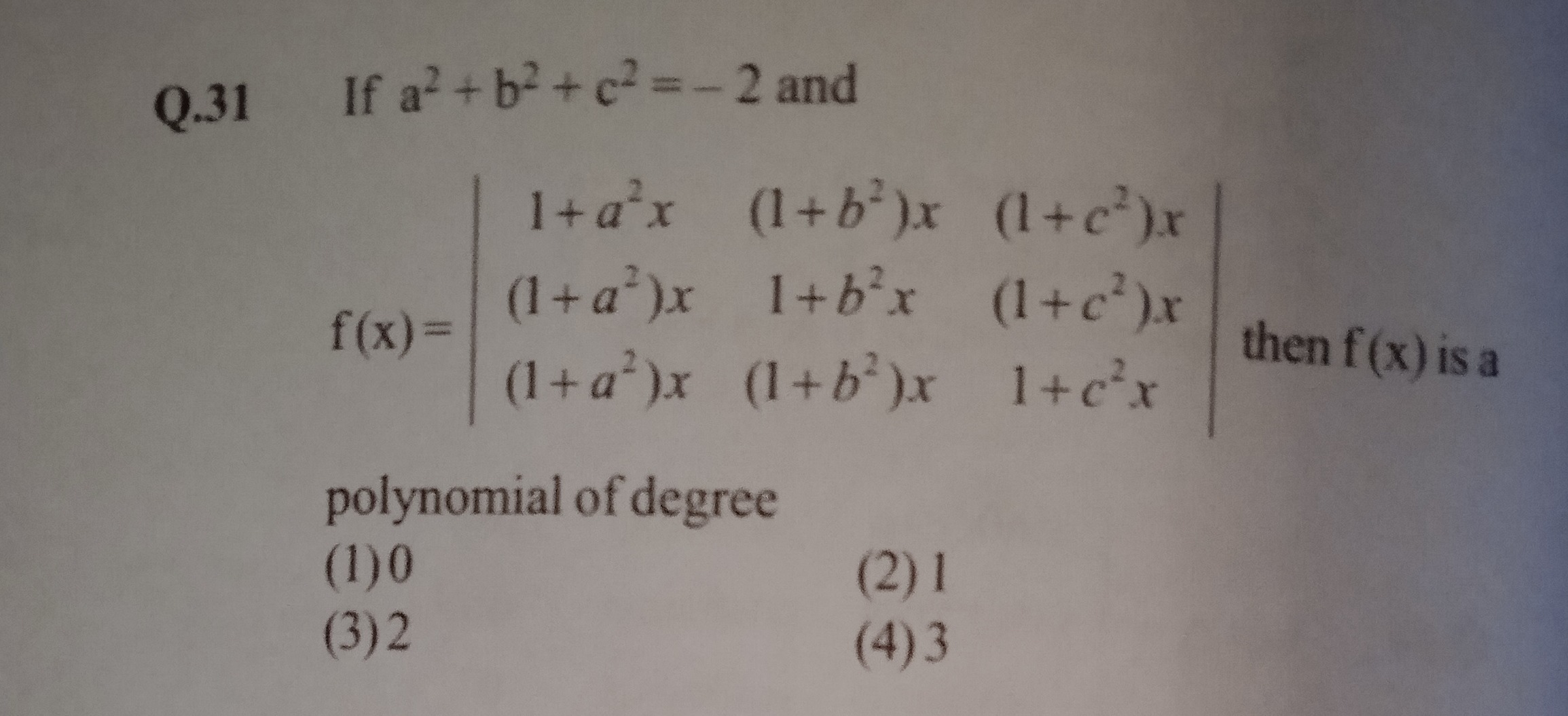Question
Question: If a²+b²+c²=-2 and $f(x) = \begin{vmatrix} 1+a^2x & (1+b^2)x & (1+c^2)x \\ (1+a^2)x & 1+b^2x & (1+c...
If a²+b²+c²=-2 and
f(x)=1+a2x(1+a2)x(1+a2)x(1+b2)x1+b2x(1+b2)x(1+c2)x(1+c2)x1+c2x then f(x) is a
polynomial of degree

A
0
B
1
C
2
D
3
Answer
1
Explanation
Solution
We are given
a2+b2+c2=−2and
f(x)=1+a2x(1+a2)x(1+a2)x(1+b2)x1+b2x(1+b2)x(1+c2)x(1+c2)x1+c2x.Step 1. Restructure the Matrix:
Write each entry of the matrix as:
- Diagonal: 1+a2x,1+b2x,1+c2x.
- Off-diagonal: (1+b2)x,(1+c2)x, etc.
Notice that for any entry from row i:
1+α2x=1+(α2x)and its off-diagonals are just 1+β2x but without the “1” (i.e. they are effectively (1+β2x)=[1+β2x] when compared with the diagonal which has an extra constant 1). Define:
u=1+a2x,v=1+b2x,w=1+c2x.Then the matrix becomes:
uu−1u−1v−1vv−1w−1w−1w.Step 2. Compute the Determinant:
A direct expansion (which exploits symmetry) leads to:
f(x)=u(v+w−1)−(u−1)[(v−1)+(w−1)].Observe:
(v−1)+(w−1)=v+w−2.So,
f(x)=u(v+w−1)−(u−1)(v+w−2).Substitute back u=1+a2x and note that
v+w=(1+b2x)+(1+c2x)=2+(b2+c2)x.Thus,
v+w−1=1+(b2+c2)x,andv+w−2=(b2+c2)x.Also, u−1=a2x.
Now,
f(x)=(1+a2x)[1+(b2+c2)x]−a2x⋅(b2+c2)x.Expanding:
(1+a2x)[1+(b2+c2)x]=1+(b2+c2)x+a2x+a2(b2+c2)x2.and
a2x⋅(b2+c2)x=a2(b2+c2)x2.The quadratic terms cancel:
f(x)=1+(a2+b2+c2)x.Given a2+b2+c2=−2, we have:
f(x)=1−2x.Thus, f(x) is a linear polynomial (degree 1).
